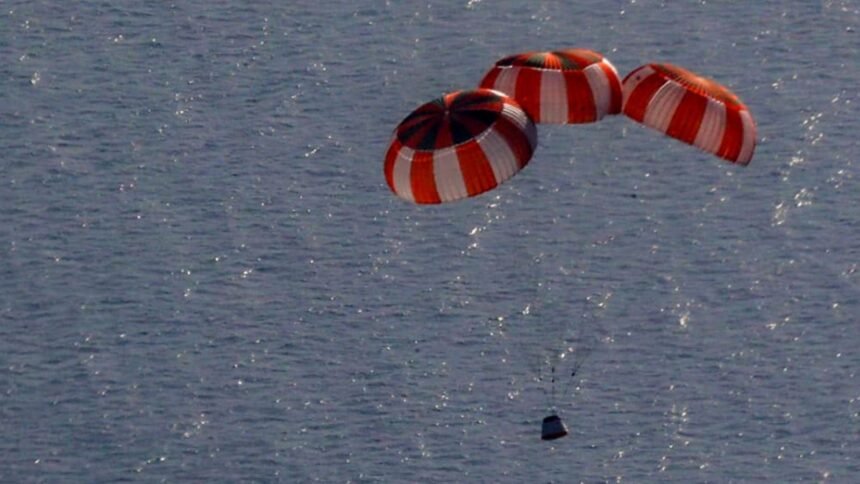In a major milestone for the Gaganyaan human spaceflight mission, the Indian Space Research Organisation successfully completed an Integrated Air Drop Test, simulating the re-entry of the crew module, deployment of all parachutes, and recovery of the crew module.
For the test, a Chinook helicopter carried the dummy crew module to a height of around 3 kilometres — 40 kilometres off the seacoast — from the country’s only spaceport Sriharikota.
Three main parachutes were deployed to slow down the crew module before it hit the sea. “It was a very successful test. All the parachutes worked as expected and the velocity was reduced to limits safe for human beings. The module was recovered by the navy and handed over to us in Chennai,” said ISRO chairperson Dr V Narayanan. The same crew module will be reused for other tests as well.
Narayanan, who had been in Delhi for the Space Day celebrations on Saturday, reached Sriharikota in the wee hours of Sunday for the test and then travelled to Chennai to receive the crew module. He returned to Bangalore on Sunday evening.
The space agency plans to launch the first uncrewed mission of the Gaganyaan programme by the end of this year, with the first crewed flight scheduled for late 2027. The government has so far approved eight flights under the Gaganyaan mission, two crewed and six uncrewed. One of the six uncrewed missions will also carry the first module of the Bharatiya Antariksha Station.
The crew module for the actual flights under Gaganyaan mission will consist of a 10-parachute system. First to open will be two Apex Cover Separation Parachutes that are meant to protect and clear the parachute compartment before the deployment of the others. This will be followed by the opening of two drogue parachutes that are meant to stabilise and bring down the velocity of the crew module. After that, three pilot chutes would be used to extract the three main parachutes that would be needed for the final splashdown.
Two of the three main parachutes are sufficient to ensure a safe landing of the astronauts.
Story continues below this ad
The test carried out on Sunday was not only to check the deployment of the drogue, pilot, and main parachutes but for the coordination between four key organisations — ISRO that will undertake the Gaganyaan mission, DRDO that designed the parachute system, the Indian Air Force that provided the Chinook helicopter for the drop test, and the Indian Navy that recovered the module. The Indian Navy will undertake the recovery operations for the final Gaganyaan flights as well.
ISRO had previously conducted an air drop test for the main parachutes alone in 2022. However, a planned air drop test for the drogue, pilot, and main chutes could not be carried out last year as there were some problems in the helicopter as it “could not handle the crew module” according to an official. The problems have since been address and a successful test was carried out on Sunday.
Stay updated with the latest – Click here to follow us on Instagram
© The Indian Express Pvt Ltd









